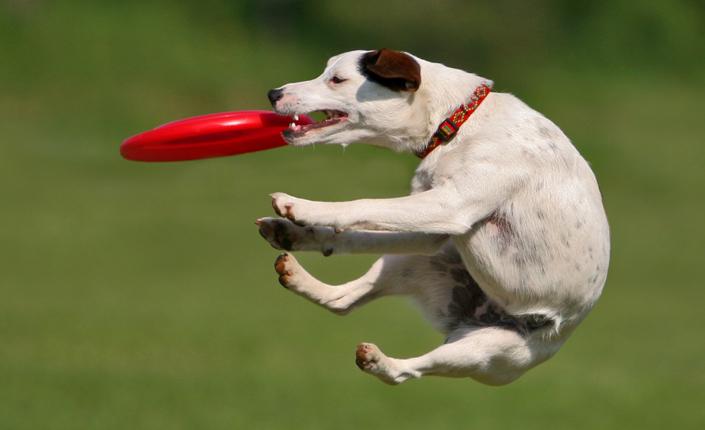
Could Your Dog Benefit From Agility Training?
If the dog world had a national sport, it would be agility. Agility training is a full body (and mind) workout for both you and your pooch. As the handler, you are responsible for leading your canine athlete through an obstacle course of jumps, tunnels, and walkways with verbal commands while you run alongside them. The great thing about agility training is that all breeds can participate as long as the course is tailored to their size and height. Think your dog could be a contender? Read on to learn more about agility training and find out whether your furry friend could be destined for athletic excellence.
Benefits
Besides being a fun activity and an excellent source of exercise, agility training offers a number of benefits that both you and your canine companion can take advantage of. Does your dog’s recall ability need some work? Are they fearful? Easily distracted? Agility training can help correct these problematic behaviours. With consistent training, you will both experience:
- Improved communication
- Increased attention
- Increased confidence
- A stronger bond
- Greater mutual trust
Is Agility Training Right For My Dog?
To determine whether agility training is a good activity for your dog, some considerations need to be made. This type of training can be hard on your pet’s joints so make sure your pooch is physically fit enough to participate. You can begin training as early as the puppy stage as long as you start with the basics like getting them used to walking on different surfaces. Do not attempt jumps at this stage as doing so before a dog’s fully-grown can severely damage their joints. Many agility clubs even recommend starting serious training once a dog is more than a year old or fully-grown. Once their bones and muscles have strengthened, you can begin introducing jumps and other obstacles.
The same considerations apply to seniors. Their joints may be weaker so jumps will need to be adjusted accordingly. Since agility is both a physical and mental sport, keep training sessions for puppies and seniors short. As with any new activity, consult your vet for advice if you are unsure.
Temperament is another important consideration. If you intend to compete or participate in a group training session, your canine athlete will be around other dogs and trainers. Before heading to the track, make sure Fido has a handle on the basic obedience commands and can be politely sociable. Nobody likes unsportsmanlike behaviour!
Getting Started
If you have the space, you can set up a practice course in your backyard. Many standard agility training obstacles can even be purchased online. If you prefer a more DIY approach, you can start by training on a homemade agility course using objects found around your house or at the local hardware store (for example: old tires, cinder blocks, PVC pipe, and plywood). Remember that jumps should always be tailored to your pet’s height to avoid injuries. Lead your athlete through the course and focus on basic navigation to start. Once you have both mastered the basics, you can concentrate on speed and accuracy.
Of course, you don’t have to do it alone. You can search online for group or private lessons from a professional handler in your area. You may even be interested in joining a local training club. Professional training is especially important if you plan on competing someday. However, you don’t need to compete to reap the rewards of this canine sport. Agility training is a recreational activity that can be played just for fun.
The most important thing to remember about trying any new activity is to never force your dog to do anything they don’t want to do. The same goes for you. After all, this should be a fun activity that both of you enjoy. We hope we’ve been able to shed some light on the benefits of this canine sport. See you at the track!
